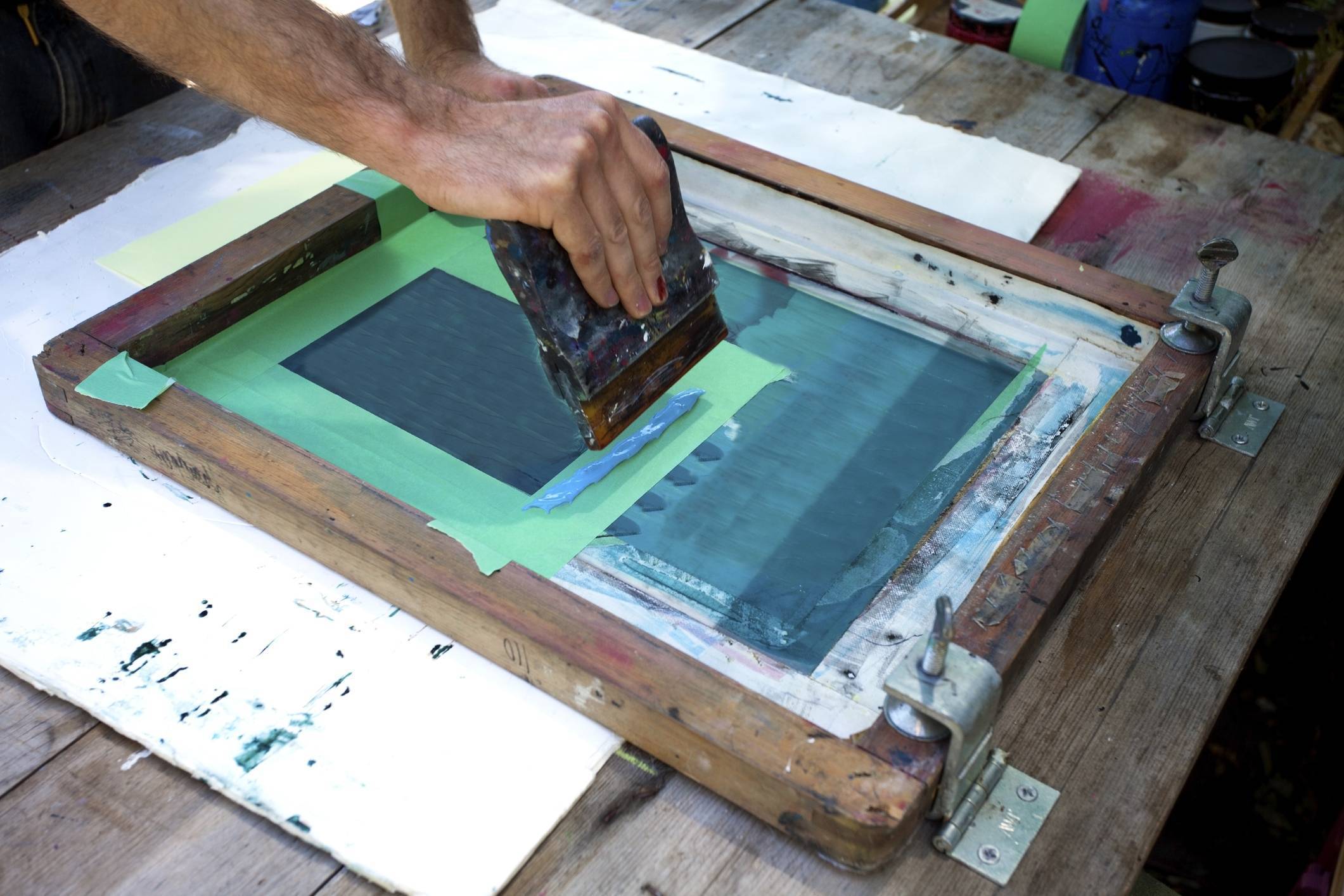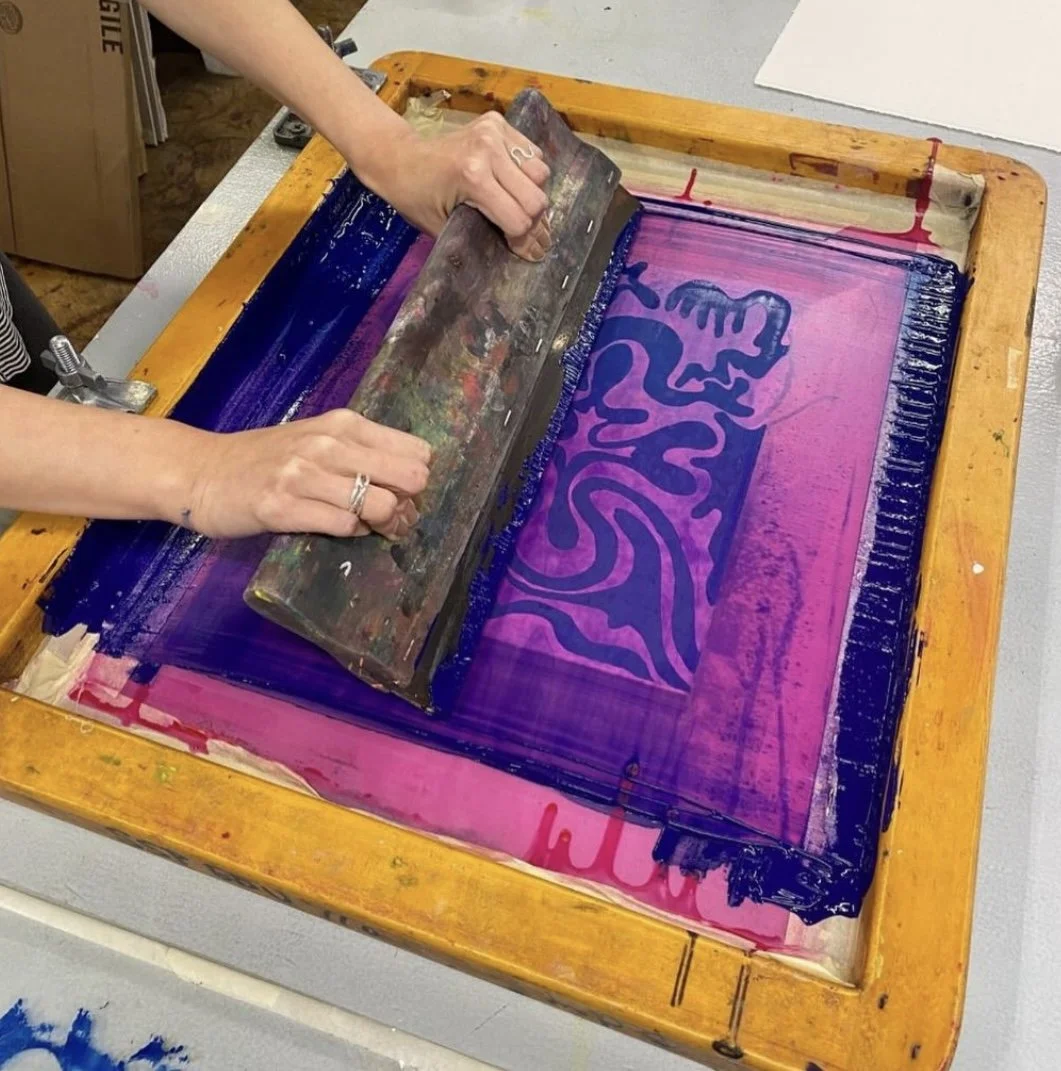How to prepare your artwork for T-Shirt Printing professional results
Wiki Article
From Layout to Shipment: Understanding the Art of T-Shirt Screen Printing
The trip from design to delivery in t-shirt screen printing includes a series of critical stages that demand interest to information and strategic planning. It begins with understanding the subtleties of your target market, adhered to by the selection of suitable materials and the preparation of artwork that meets high requirements. As the procedure unfolds, difficulties in high quality control and logistics can develop, potentially affecting the final result. Checking out these complexities reveals not only the complexities of screen printing however additionally the vital techniques that can raise a brand's standing in an open market.Comprehending T-Shirt Screen Printing
Understanding T-Shirt screen printing includes recognizing a flexible and widely utilized method for moving layouts onto textile. This technique utilizes a stencil and a mesh screen to use ink onto various textile products, generally cotton and polyester blends. The process begins with the creation of a screen that includes the preferred design, which is after that meticulously lined up on the fabric.Ink is pressed via the screen's open locations using a squeegee, allowing for specific application of shade. This approach is preferred for its capability to produce lively, lasting prints that hold up well to cleaning and wear. In addition, screen printing can fitting both straightforward and complicated styles, making it a recommended option for custom-made apparel, marketing products, and also artistic jobs.
Moreover, screen printing supplies scalability, making it ideal for both small batch orders and large-scale productions. While first configuration prices may be greater contrasted to various other printing methods, the performance and toughness of screen printing frequently warrant the investment. In general, understanding the fundamentals of Tees screen printing is important for any individual looking to take part in this preferred form of textile decoration, whether for industrial undertakings or individual projects.
Conceiving Your Layout
Conceiving your design is an essential action in the Tees screen printing procedure, as it establishes the structure for the whole job. This stage entails creating ideas that reverberate with your target market while ensuring that the design lines up with the brand's identity and message. It is important to start by discovering themes, color schemes, and graphics that reflect the designated visual.Sketching preliminary ideas can be advantageous, allowing for a graph of ideas prior to wrapping up the design (Business Branding Services). Take into consideration the use of typography, imagery, and format in a manner that captures interest and interacts successfully. In enhancement, it is essential to anticipate the printing method that will certainly be employed, as this can affect style complexity and shade selections
Participating in conceptualizing sessions with group participants or seeking comments from potential customers can likewise enhance the concept procedure, providing diverse perspectives that improve the design. Ultimately, a well-thought-out style not just improves the visual allure of the T-shirt but also promotes a connection with the target market, driving rate of interest and potential sales. Committing time to conceive your layout can lead to a successful screen printing end result.
Choosing the Right Products
When selecting the best materials for Tees screen printing, it is vital to take into consideration the textile's make-up, weight, and texture, as these aspects considerably impact the last product's high quality and really feel. Cotton is a prominent choice because of its breathability, softness, and capability to soak up ink properly, making it ideal for vibrant prints - T-Shirt Printing. Blends, such as cotton-polyester, deal resilience and wrinkle resistance, however might impact ink adherence, calling for mindful factor to consider of printing techniquesThe weight of the textile, usually measured in grams per square meter (GSM), influences the drape and general feel of the Tees. Much heavier fabrics might give a much more premium look, while lighter choices fit for sportswear. Structure also contributes; smoother textiles have a tendency to generate sharper prints, while textured surface areas can produce special visual effects.
In addition, consider the ecological influence of products. Organic cotton and recycled polyester are acquiring appeal amongst eco-conscious consumers. Inevitably, choosing the ideal materials entails balancing aesthetic appeal, performance, and sustainability, guaranteeing that the T-shirt not only looks wonderful but additionally satisfies the assumptions of your target audience.
Preparing Artwork for Printing

Preparing art work for T-shirt screen printing calls for careful attention to detail to ensure that the last print precisely mirrors the desired layout. The initial step is to produce a high-resolution digital documents, ideally in vector format, as this permits for scalability without loss of high quality. Common software made use of for this function consists of Adobe Illustrator and CorelDRAW.

Take into consideration the measurements of the print location and keep correct margins to stay clear of layout cutoff. It's additionally important to consist of registration marks for positioning throughout the printing process. Request an evidence from the printer to envision the last product before mass manufacturing. This step is important for determining any potential concerns, ensuring that the printed T-shirt fulfills the preferred top quality and style specs. Proper prep work of art work considerably influences the overall success of the screen printing task.
Understanding the Printing Process

Next off, choosing the Web Site ideal ink is necessary. Different ink types, such as plastisol or water-based, offer various surfaces and toughness. Recognizing the textile structure of the Tee shirts likewise assists in picking suitable inks.
When it involves the real printing, regulating the squeegee stress and angle is vital. Regular pressure will generate also ink circulation, while the angle influences the circulation and insurance coverage. Furthermore, changing the rate of the printing machine can impact the ink's curing procedure, which is essential for ensuring resilience.
Quality Control and Finishing
After the printing procedure is full, implementing efficient quality assurance procedures comes to be vital to verify that each Tees satisfies the desired requirements. Quality control entails an organized method to inspecting each garment for issues, verifying that the print quality, shade accuracy, and textile honesty straighten with the specs set throughout the style phase.The primary step in quality control is an extensive aesthetic assessment. This entails monitoring for common problems such as misalignment, ink spots, or fading. Any Tee shirts that does not meet the high quality standards ought to be addressed immediately, either via reprinting or repair work.
In enhancement to aesthetic checks, it is necessary to carry out wash tests on an example of printed t-shirts to examine the toughness of the inks and the total long life of the layout. These tests help validate that the print will preserve its vibrancy and integrity after several laundries, an important aspect for consumer contentment.
Ending up touches, such as string trimming and the application of care tags, also play a substantial role in quality assurance. By concentrating on these aspects, companies can improve the overall discussion of their products, inevitably leading to an extra gratifying client experience.
Packaging and Shipment Solutions
Efficient product packaging and delivery services are essential elements of the T-shirt screen printing procedure, as they ensure that garments get here at their location in immaculate problem. Proper product packaging not only protects the printed layouts however also improves the unboxing experience for consumers, strengthening brand name identification and professionalism and reliability.To achieve optimal packaging, think about making use of eco-friendly products that line up with sustainability trends, such as recyclable poly bags or eco-friendly boxes. Each Tee shirts ought to be nicely folded and put in protective covering to stop creasing and possible damages during transportation. Including a top quality insert or care directions can further personalize the experience, cultivating customer loyalty.
Selecting a reputable delivery partner is important when it comes to delivery. Examine alternatives based on rate, price, and tracking capabilities. Using numerous shipping approaches can satisfy various consumer requirements, from typical to expedited delivery.
Frequently Asked Concerns
What Are the Usual Errors Novices Make in Screen Printing?
Usual blunders newbies make in screen printing consist of inappropriate screen prep work, poor ink mixing, wrong exposure times, inadequate healing, and disregarding to evaluate prints. These errors can result in bad quality and unacceptable cause final products.Exactly How Can I Stop Ink From Blood Loss Throughout Printing?
To avoid ink blood loss throughout printing, warranty proper screen tension, use ideal solution thickness, choose the ideal ink consistency, maintain ideal healing temperature levels, and avoid overloading the screen with extreme ink throughout application.
What Types of Inks Are Best for Various Fabrics?
Selecting inks based on fabric kind is important. Water-based inks are suitable for cotton, providing softness. Plastisol inks match artificial materials, offering sturdiness (Abilene T-Shirt Screen Printing Company). Discharge inks successfully mix with natural fibers, ensuring lively colors without jeopardizing textile stabilityHow Do I Select the Right Screen Mesh Matter?
Picking the best screen mesh count relies on the preferred print information and ink kind. Greater mesh matters produce better details, while reduced matters promote thicker inks. Examine fabric type and layout complexity for optimal outcomes.Can I Make Use Of Screen Printing for Little Set Orders?
Yes, screen printing can be effectively made use of for little set orders. Texas Screen Printing Experts. This approach permits premium results and detailed styles, making it a sensible alternative for personalized apparel, marketing products, or limited edition runsComprehending T-Shirt screen printing entails recognizing a flexible and commonly utilized approach for transferring designs onto textile. While preliminary setup costs may be higher contrasted to other printing techniques, the performance and resilience of screen printing commonly warrant the investment. Preparing artwork for Tee shirts screen printing needs careful attention to information to ensure that the last print properly reflects the intended style. Mastering the printing procedure is important for accomplishing high-quality results in Tee shirts screen printing. Common mistakes newbies make in screen printing include incorrect screen prep work, insufficient ink blending, inaccurate direct exposure times, not enough treating, and neglecting to test prints.
Report this wiki page